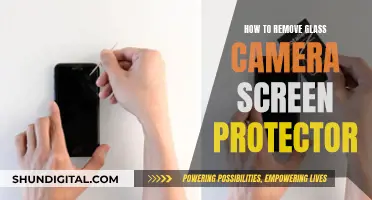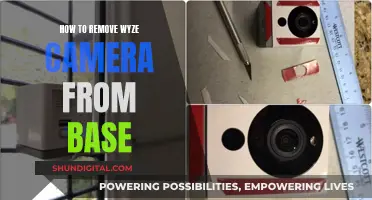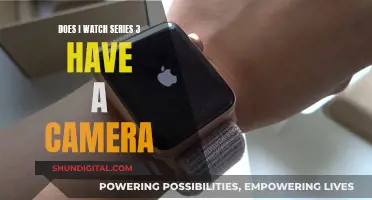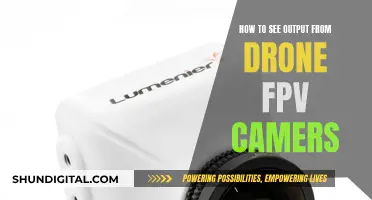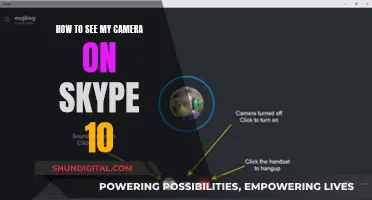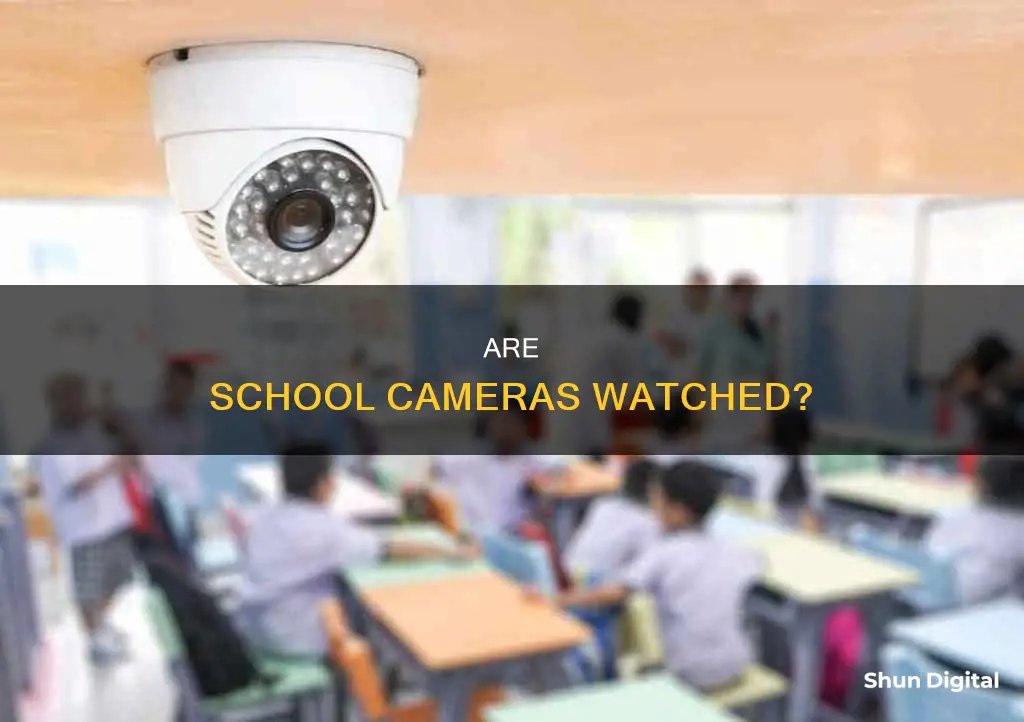
The use of security cameras in schools is a highly debated topic. While some argue that they are necessary for ensuring the safety of students and staff, others believe that they invade privacy and create an authoritarian atmosphere. According to a 2016 study by the National Center for Education Statistics, 73.2% of elementary schools, 88.6% of middle schools, and 94.2% of high schools in the USA employed security cameras to varying degrees. This number has likely increased as the price of camera systems has decreased over the years, making it more accessible for schools to implement them.
Security cameras in schools can act as a deterrent for criminal activity, bullying, and vandalism, and can aid in investigations by providing valuable evidence. However, the question of who has access to the footage and how it is stored and managed raises concerns about privacy and the potential for misuse.
So, do schools watch the cameras? The answer varies depending on the school's policies and available resources. Typically, schools do not have dedicated staff to monitor cameras continuously, but they may review footage retrospectively if an incident occurs. The use of security cameras in schools is a complex issue that requires balancing safety and privacy considerations.
| Characteristics | Values |
|---|---|
| Affordability | The cost of a high-definition multi-camera security system has decreased over the years. |
| Privacy concerns | Some people feel that cameras are an invasion of privacy and need to be balanced with security. |
| Surveillance policies | Schools should have clearly defined policies regarding video and audio surveillance. |
| Storage | Security footage should be stored for at least 30 days and can be stored on local servers or cloud-based systems. |
| Monitoring | Schools typically don't have enough resources to pay people to monitor cameras continuously. |
| Effectiveness | Cameras can deter crime, bullying, and school violence, as well as aid in gathering evidence. |
| Legality | Surveillance cameras in areas with a reasonable expectation of privacy, such as bathrooms, are illegal. |
What You'll Learn
- Schools use security cameras to deter crime, bullying, and school violence
- Security cameras are placed in hallways, entrances, and common areas
- They are typically only checked if there is an incident to review
- Security camera systems are more affordable now, which has led to increased adoption
- There are concerns about privacy invasion and the influence on trust between teachers and students

Schools use security cameras to deter crime, bullying, and school violence
Security cameras are a popular tool used by schools to ensure the safety of students and staff. In the US, their use is widespread, with 91% of public schools employing them in 2019-2020. Schools use security cameras to deter crime, bullying, and school violence, as well as to improve emergency preparedness and control campus perimeters.
Security cameras act as an "eye in the sky", providing consistent monitoring of school grounds. They can be placed in hallways, entrances, and other common areas to deter violence, trespassing, and vandalism. Cameras with motion detection features can also help investigate incidents by making it easier to find suspects and gather evidence.
In addition to their role in crime prevention, security cameras are valuable in addressing bullying. Bullying is a significant problem in schools, and victims often suffer from negative physical, academic, and mental health issues. Security cameras can help teachers and administrators identify and respond to bullying incidents, especially in areas where teacher presence is limited, such as cafeterias and corridors. The cameras provide footage that helps hold students accountable for their actions and serves as a deterrent to bullying.
While security cameras offer several benefits, it is essential to consider potential drawbacks. Privacy concerns arise when discussing the use of security cameras in schools. To address this issue, schools should develop clear policies that balance safety and privacy. It is recommended that video surveillance is limited to common areas, and alternative measures such as motion sensors or vape sensors are used in private spaces like restrooms and locker rooms.
Furthermore, the cost of security camera systems can be a challenge for schools, especially with the need for regular monitoring by personnel. Schools may need to allocate resources for staff dedicated to monitoring the camera feeds to utilise the system effectively.
The Privacy Paradox: Cameras in Suicide Watch Cells
You may want to see also

Security cameras are placed in hallways, entrances, and common areas
Security cameras are often placed in hallways, entrances, and common areas of schools. These areas typically include indoor spaces such as auditoriums, cafeterias, and gymnasiums. Schools opt for these locations as they help increase visibility for staff, allowing them to respond quickly to emergencies or altercations.
The presence of security cameras in these areas acts as a deterrent for individuals intending to cause harm or engage in inappropriate behaviour. The likelihood of being recorded can discourage bullying, harassment, trespassing, and vandalism. Additionally, in the event of an incident, recorded footage can aid in gathering evidence and identifying suspects.
While security cameras in schools are common, their use is governed by regulations. It is important to note that the laws regarding surveillance on school grounds vary across states in the US. However, generally, the use of video cameras is permitted in areas where privacy is not expected, such as hallways and outdoor courtyards.
To ensure compliance and respect for privacy, schools should avoid placing cameras in areas such as locker rooms, restrooms, and changing areas. By strategically placing security cameras in hallways, entrances, and common areas, schools can balance the need for safety and security while also upholding the privacy of students and staff.
Are You Being Watched? Detect Hidden Cameras
You may want to see also

They are typically only checked if there is an incident to review
In general, security cameras in schools are typically only checked if there is an incident that needs to be reviewed. This is because most schools don't have the budget to pay staff to monitor the cameras constantly. This means that footage is usually only reviewed retrospectively, in the event of a specific incident such as violence, drug use, theft, vandalism, or bullying.
However, there are some exceptions to this. For example, some schools have security staff who monitor the camera feeds in real-time. In addition, some schools have cameras with motion-detecting features, which can be used to detect movement over a set period and make it easier to find incidents without having to review days of footage.
The use of security cameras in schools is a highly debated topic. Some of the benefits include deterring crime, bullying, and school violence, as well as discouraging vandalism and trespassing. They can also aid in gathering evidence and help to keep an eye on students, teachers, and visitors. On the other hand, some people argue that cameras invade privacy and create an authoritarian atmosphere that negatively affects students' social skills and comfort levels.
There are also legal considerations to take into account when installing security cameras in schools. For example, placing cameras in areas where there is a reasonable expectation of privacy, such as bathrooms, is illegal. Schools are also required to have a clear surveillance camera policy outlining the rights and responsibilities of students, teachers, administrators, and staff, as well as addressing privacy issues and providing fair disclosure that surveillance measures are in place.
Can Smartwatches Spy on You?
You may want to see also

Security camera systems are more affordable now, which has led to increased adoption
Security camera systems have become much more affordable in recent years, which has led to their increased adoption in schools. In 2006, a standard-resolution camera for schools could cost anywhere from $500 to $1,000, while a higher-resolution camera could be priced as high as $8,000. Now, in 2024, a high-definition multi-camera security system can be purchased for as little as $1,500, with the price of professional installation ranging from $100 to $200 per camera. This has made security camera systems accessible to schools that previously could not afford them.
The decreasing cost of security camera systems is particularly evident when compared to the prices of just a few years ago. In 2024, the best cheap home security system can be purchased for $140, while a top-rated wireless home security camera can be bought for $120. These prices are a far cry from what they used to be, and the trend towards more affordable security solutions is likely to continue.
The affordability of security camera systems has had a significant impact on schools. A 2016 study by the National Center for Education Statistics found that 73.2% of elementary schools, 88.6% of middle schools, and 94.2% of high schools in the United States employed security cameras to varying degrees. This number has likely increased as camera systems have become more affordable.
The adoption of security camera systems in schools is further encouraged by the availability of government grants and private donations for improving safety and security in educational institutions. While there may be certain criteria that schools need to meet to qualify for such funding, the opportunity to enhance security measures without incurring substantial costs is appealing to many educational institutions.
In addition to their affordability, security camera systems offer several advantages to schools. They provide an effective way to monitor school premises, deter crimes, bullying, and violence, and aid in gathering evidence in the event of an incident. The presence of cameras can also discourage vandalism and trespassing, creating a safer environment for students and staff.
However, it is important to consider the potential privacy concerns associated with the increased use of security cameras in schools. The balance between safety and privacy is a delicate one, and school and district leaders must carefully assess their needs to determine the appropriate level of surveillance. Nonetheless, with the decreasing cost of security camera systems, schools now have greater flexibility in enhancing their security measures to ensure the well-being of their students and staff.
Can My Camera Spy on Me?
You may want to see also

There are concerns about privacy invasion and the influence on trust between teachers and students
The use of security cameras in schools is a contentious issue, with valid arguments on both sides of the debate. While some view them as a necessary safety measure, others argue that they can lead to an invasion of privacy and a breakdown of trust between teachers and students.
One of the main concerns surrounding school security cameras is the potential invasion of privacy. Students and teachers may feel uncomfortable with the idea of being constantly monitored, and this can create a sense of apprehension and resentment. The presence of cameras may make individuals feel like they are being spied on and that the school doesn't trust them. This can be especially true if cameras are installed in classrooms or other areas where privacy is typically expected, such as restrooms and locker rooms. As a result, individuals may feel restricted in their behaviour and less able to act naturally, potentially impacting their learning and development of social skills.
In addition to privacy concerns, the use of security cameras in schools can also affect the level of trust between teachers and students. When cameras are installed, teachers may feel that their performance is being monitored and that their privacy rights, as well as those of their students, are being violated. This can lead to feelings of demoralization and resistance among educators. On the other hand, students may perceive the presence of cameras as a sign of mistrust from the school administration. They may feel that the school doesn't trust them to behave appropriately and that their actions are being constantly scrutinized. This can negatively impact the relationship between teachers and students, which is built on mutual respect and trust.
Furthermore, the use of security cameras in schools can also have an impact on the school climate and peer relationships. The presence of cameras can create a culture of criminalization and fear, impairing the relationships between students and staff and disrupting the learning environment. Students may feel like they are always being watched and judged, leading to increased self-consciousness and anxiety. This can hinder their ability to fully engage in the learning process and may even discourage them from participating in class or seeking help when needed.
However, it is important to note that the impact of security cameras on trust and privacy is not solely negative. In some cases, cameras can also serve as a means of establishing mutual trust and maintaining good relationships between parents, teachers, and students. For example, cameras can provide objective evidence in cases of alleged harassment or bullying, helping to resolve conflicts and protect the well-being of all involved parties. Additionally, parents may view the presence of security cameras as a sign of the school's commitment to safety and conflict resolution, increasing their trust in the institution.
In conclusion, while security cameras in schools can provide numerous safety benefits, it is crucial to carefully consider their potential impact on privacy and trust. School administrators must weigh the pros and cons and develop clear policies that prioritize the protection of student privacy and the maintenance of a positive school climate.
Employee Surveillance: Is It Legal to Watch Your Workers?
You may want to see also
Frequently asked questions
Schools generally do not have the resources to monitor the cameras at all times. Typically, they are only checked if there is an incident that needs to be reviewed.
School security cameras can help deter theft, crimes, and bullying, as well as aid in investigations by providing valuable evidence. They can also help keep an eye on students, teachers, and visitors, and give parents peace of mind.
The main concerns with school security cameras are the potential invasion of privacy and the high cost of purchasing, installing, monitoring, and maintaining the cameras. Some also argue that security cameras can create an authoritarian atmosphere and influence the trust between teachers and students.
School security cameras are typically placed in areas that do not infringe on students' right to privacy, such as classrooms, hallways, common areas, and building perimeters. However, installing security cameras in areas where there is a reasonable expectation of privacy, such as school bathrooms, is illegal. Schools should also have a clear surveillance camera policy outlining the rights and responsibilities of students, teachers, and staff, as well as how the footage will be stored and accessed.


